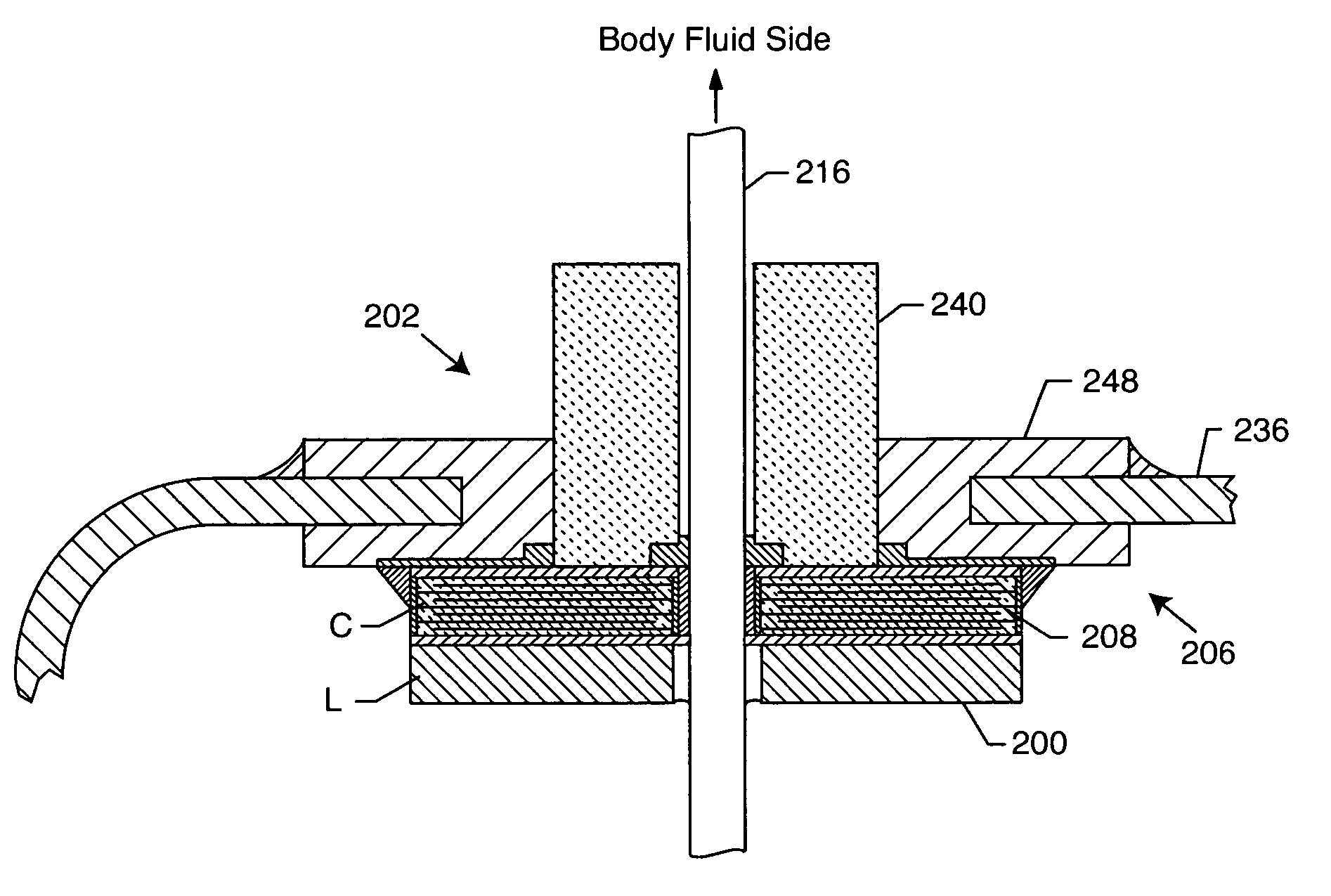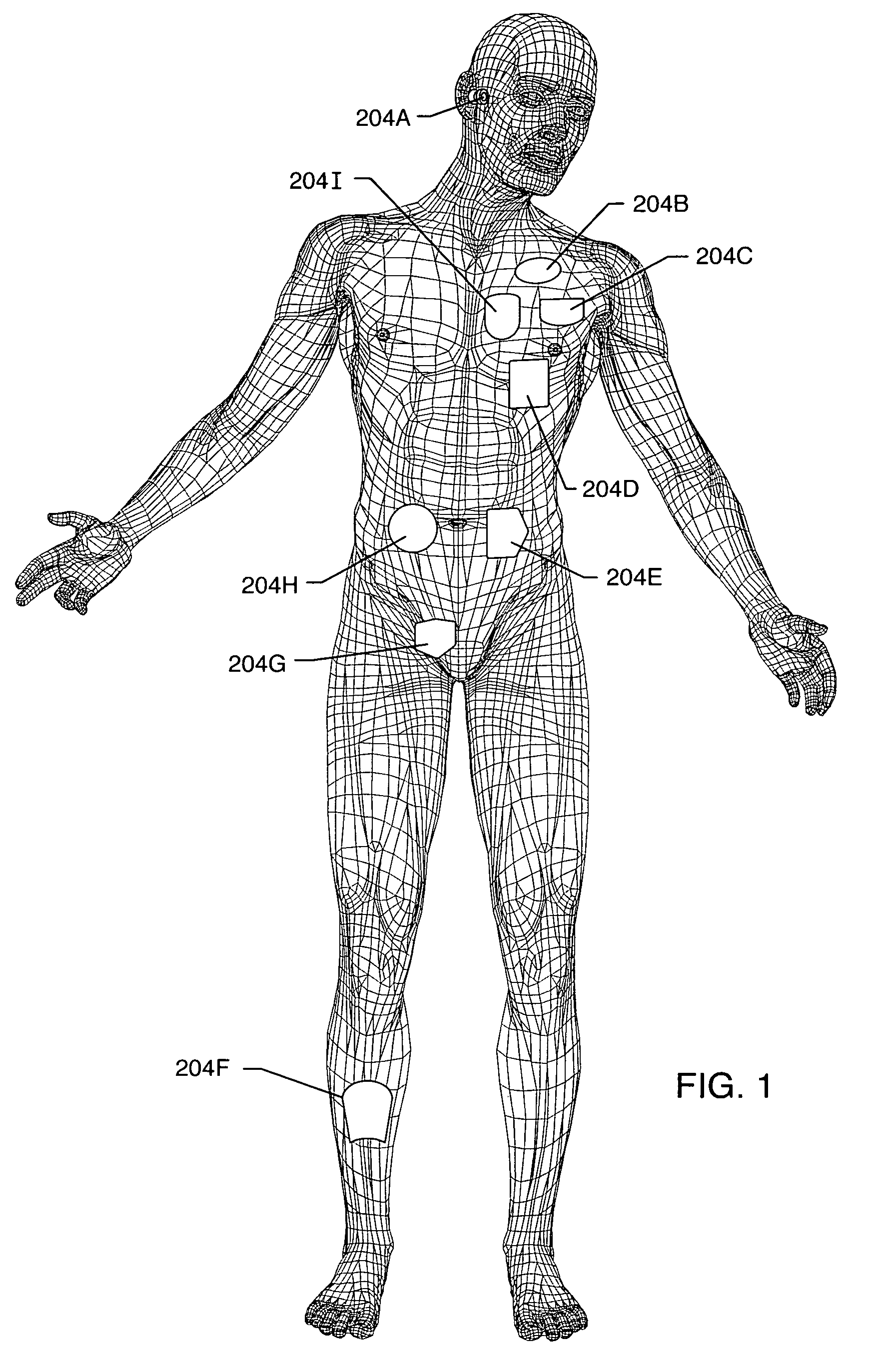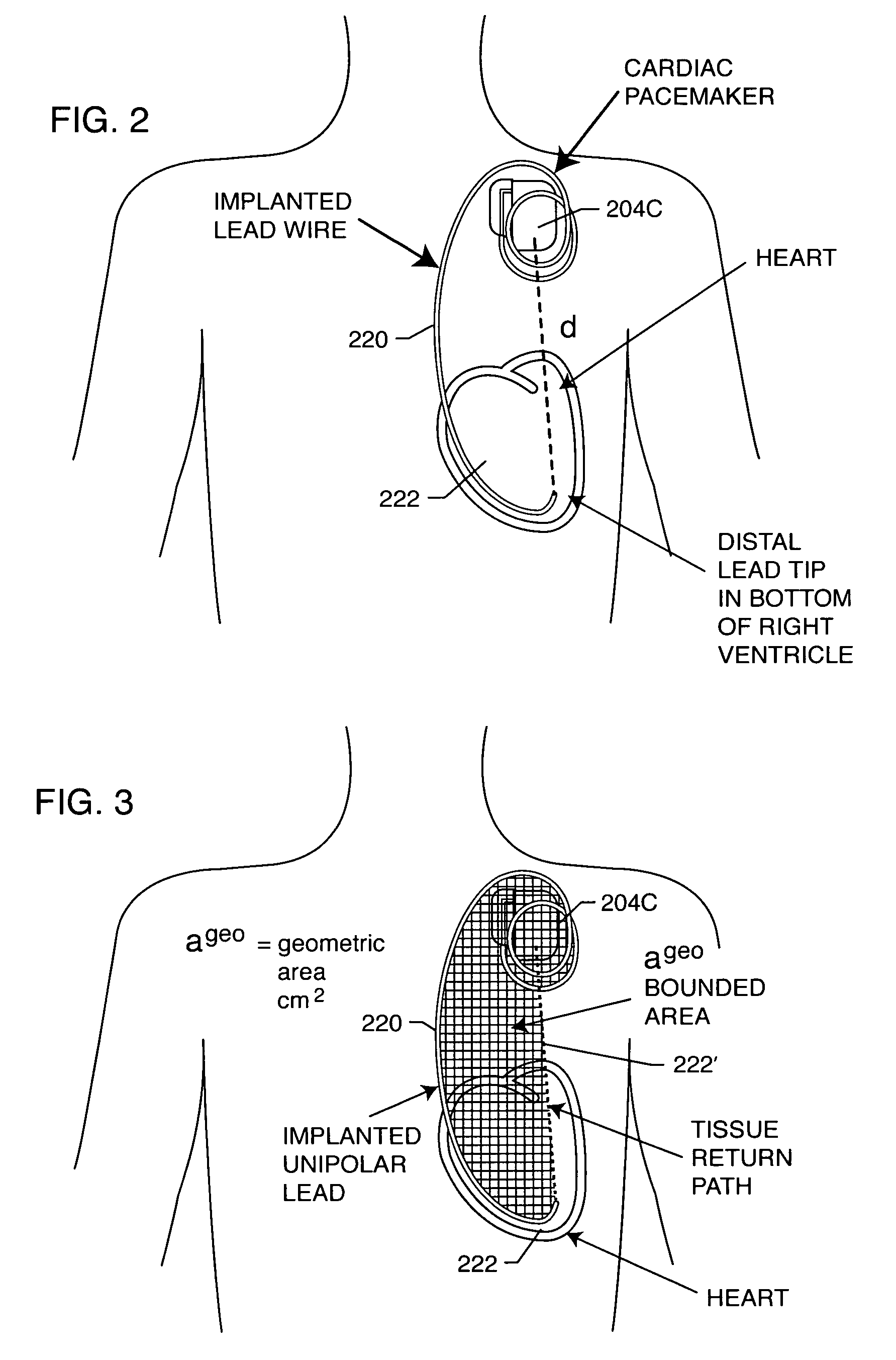There have been reports of latent problems with cardiac pacemakers after an MRI procedure occurring many days later.
The lossy ferrite
inductor or toroidal slab concept as described herein is not intended to provide protection against static magnetic fields such as those produced by
magnetic resonance imaging.
Such unwanted EMI signals can disrupt proper operation of the medical device, resulting in malfunction or failure.
For example, it has been documented that stray EMI signals emanating from cellular telephones can inhibit pacemaker operation, resulting in asynchronous pacing, tracking and missed beats.
These antennas are not very efficient due to the damping effects of
body tissue; however, this can often be offset by body resonances.
(1) Closure of the pacemaker
reed switch. When a pacemaker is brought close to the MRI
scanner, the
reed switch can close, which puts the pacemaker into a fixed rate or asynchronous pacing mode. Asynchronous pacing may compete with the patient's underlying cardiac
rhythm. This is one reason why patients have generally been advised not to undergo MRI. Fixed rate or asynchronous pacing for most patients is not an issue. However, in patients with unstable conditions, such as
myocardial ischemia, there is a substantial risk for
ventricular fibrillation during asynchronous pacing. In most modern pacemakers the magnetic
reed switch function is programmable. If the magnetic reed switch response is switched off, then synchronous pacing is still possible even in strong magnetic fields. The possibility to open and re-close the reed switch in the main
magnetic field by the gradient field cannot be excluded. However, it is generally felt that the reed switch will remain closed due to the powerful static
magnetic field. It is theoretically possible for certain reed switch orientations at the gradient field to be capable of repeatedly closing and re-opening the reed switch.
(2)
Reed switch damage. Direct damage to the reed switch is theoretically possible, but has not been reported in any of the known literature. In an article written by Roger Christoph Luchinger of Zurich, he reports on testing in which reed switches were exposed to the static
magnetic field of MRI equipment. After extended
exposure to these static magnetic fields, the reed switches functioned normally at close to the same
field strength as before the test.
(3) Pacemaker displacement. Some parts of pacemakers, such as the batteries and reed switch, contain
ferrous magnetic materials and are thus subject to mechanical forces during MRI. Pacemaker displacement may occur in response to magnetic force or magnetic torque.
(4)
Radio frequency field. At the frequencies of interest in MRI, RF energy can be absorbed and converted to heat. The power deposited by RF pulses during MRI is complex and is dependent upon the power and duration of the RF pulse, the transmitted frequency, the number of RF pulses applied per unit time, and the type of configuration of the RF
transmitter coil used. The amount of heating also depends upon the volume of tissue imaged, the electrical resistivity of tissue and the configuration of the anatomical region imaged. The cause of heating in an MRI environment is two fold: (a)
RF field coupling to the lead can occur which induces significant local heating; and (b) currents induced during the
RF transmission can cause local Ohms Law heating next to the distal TIP
electrode of the implanted lead. The
RF field in an MRI
scanner can produce enough energy to induce leadwire currents sufficient to destroy some of the adjacent
myocardial tissue. Various
ablation has also been observed. The effects of this heating are not readily detectable by monitoring during the MRI. Indications that heating has occurred would include an increase in pacing threshold, myocardial perforation and lead penetration, or even arrhythmias caused by
scar tissue. Such long term heating effects of MRI have not been well studied yet.
(5) Alterations of pacing rate due to the applied
radio frequency field. It has been observed that the
RF field may induce undesirable fast pacing (QRS complex) rates. There are two mechanisms which have been proposed to explain rapid pacing: direct interference with pacemaker
electronics or pacemaker
reprogramming (or reset). In both of these cases, it would be desirable to raise the impedance, make the
feedthrough capacitor more effective and provide a very high degree of protection to AIMD
electronics. This will make alterations in pacemaker pacing rate and / or pacemaker
reprogramming much more unlikely.
(6) Time-varying
magnetic gradient fields. The contribution of the time-varying gradient to the
total strength of the MRI magnetic field is negligible, however, pacemaker systems could be affected because these fields are rapidly applied and removed. The
time rate of change of the magnetic field is directly related to how much electromagnetic force and hence current can be induced into a leadwire
system. Luchinger reports that even using today's gradient systems with a time-varying field up to 50 Tesla per second, the induced currents are likely to stay below the biological thresholds for cardiac
fibrillation. A theoretical upper limit for the
induced voltage by the time-varying
magnetic gradient field is 20 volts. Such a
voltage during more than 0.1 milliseconds could be enough energy to directly pace the heart.
There are additional problems possible with implantable cardioverter defibrillators (ICDs).
ICDs use different and larger batteries which could cause higher magnetic forces.
The programmable sensitivity in ICDs is normally much higher than it is for pacemakers, therefore, ICDs may falsely detect a
ventricular tachyarrhythmia and inappropriately deliver therapy.
There can also be heating problems of ICD leads which are expected to be comparable to those of
pacemaker leads.
In summary, there are a number of studies that have shown that MRI patients with active implantable medical devices, such as cardiac pacemakers, can be at risk for potential hazardous effects.
Further complicating this is the fact that each manufacturer's pacemaker and ICD designs behave differently.
Most experts still conclude that MRI for the pacemaker patient should not be considered safe.
As MRI technology progresses, including higher field gradient changes over time applied to thinner tissue slices at more rapid imagery, the situation will continue to evolve and become more complex.
With the patient's life literally at risk, the physician may make the decision to perform MRI in
spite of all of the previously described attendant risks to the
pacemaker system.
 Login to View More
Login to View More  Login to View More
Login to View More 


